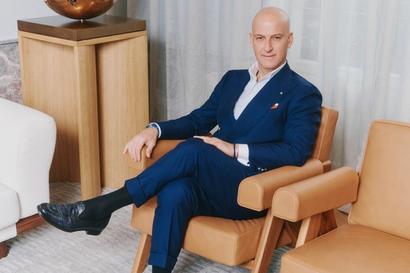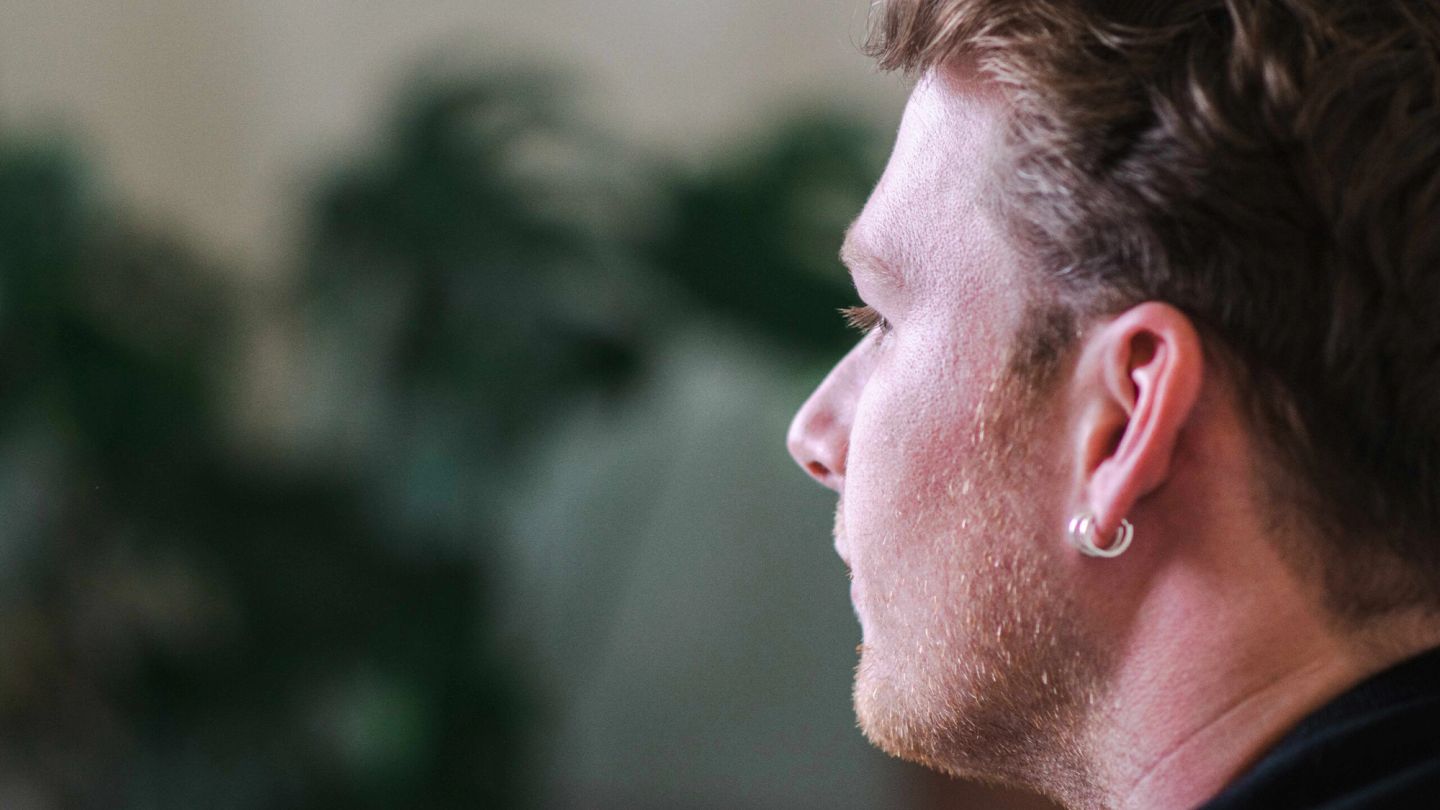

Mental Health Awareness Week 2023: “If we could save just one person from suicide, in his memory, that alone would be a very special legacy”
We speak to Harry Wentworth-Stanley, a devoted trustee of James’ Place – the renowned UK charity that focuses on suicide prevention – about his background and the importance of normalising conversations about life's ups and downs
- Words: Josh Lee
This past Monday marked the beginning of Mental Health Awareness Week 2023, a seven-day stretch in which members of the public are actively encouraged to educate – or further educate – themselves with issues surrounding the topic, with the ultimate aim of society becoming more aware, compassionate and supportive when it comes to the complexities and nuances of one’s and other’s psychological wellbeing.
This year, we’re taking a look at James’ Place, a charity that focuses on providing free, life-saving treatment to suicidal men. Launched by Clare Milford Haven and Nick Wentworth-Stanley, following the death of their son, James, in 2006, the establishment operates centres in both Liverpool and London – with the latter venue having opened little over a year ago, by HRH The Prince of Wales – and has become acknowledged for its lack of waiting lists; its ability to rapidly get to the crux of a man’s suicidal crisis; and its approachable, non-clinical environment and treatments, which tend to comprise approximately six-to-eight face-to-face sessions with a trained, professional therapist. To date, the charity has treated over 1,500 men, and its ultimate goal is to open further venues so that half the male population in England will be within two hours of a James’ Place centre.
Below, we speak to Harry Wentworth-Stanley, a devoted trustee of the charity, and the younger brother of James, to discuss his background, how James’ Place is doing things differently, and why men still struggle to vocalise their issues.
JL: Let’s start with the ‘beginning’. I believe that the charity was set up after your brother, James, sadly died by suicide in 2006. If you’re comfortable with doing so, would you be able to tell our readers a little bit about how that period was for you, personally, and the steps you took to set up the charity?
HW-S: Even now, 16 years after losing James to suicide, I find it very difficult to take my mind back to that time. As the eldest sibling, James was at the centre of everything in our family and the future we all imagined. In a flash, our world smashed into a thousand tiny pieces. You never imagine such a tragedy could impact you and your loved ones. Nothing made any sense – I thought I knew James inside out. Why would someone with such a lust for life choose to end it? What warning signs had we missed?
While we will never have all the answers, some things became clearer as we searched for some reasoning. We learned that suicide was, and remains, the biggest killer of young men in the UK – that statistically, therefore, the thing most likely to kill James was himself. We also discovered that James had, in fact, reached out for help for anxiety and suicidal thoughts, but the right help wasn’t available in his hour of need.
A year or so after James died, my wonderful parents started a charitable fund in his memory. The objective of the charity was to prevent other families from going through the same horror that we had been through – if we could save just one person from suicide, in his memory, that alone would be a very special legacy. Over the years, the charity has evolved into what it is today, James’ Place, providing life-saving intervention to men in suicidal crisis. Our first centre opened in June, 2018, in Liverpool, the first of its kind in the UK, followed by a second centre, in London, in 2022.
I’ve seen the charity’s approach described as ‘unique’ – in what ways does it differ from other establishments’ approach?
Yes, our approach to treating men is unique. We set up James’ Place as we could see there was a gap for a service such as ours, for men like James who don’t necessarily have a long-term mental-health condition, but are in a temporary suicidal crisis and don’t know where to go for help. We are essentially delivering a face-to-face clinical treatment in a non-clinical environment – our safe, warm and friendly centres in London and Liverpool – which are like stepping into someone’s home. All our therapists are trained professionals, not volunteers, and men have the same therapist throughout their treatment. We work alongside the NHS and other local support services, taking on clinical responsibility for the men we treat, which is quite unusual in the charity sector. We also see men quickly, we don’t have a waiting list. Finally, we can prove that our treatment works, as we are independently evaluated – men experience a clinically and statistically significant positive change following treatment and reduced levels of psychological distress.
Harry Wentworth-Stanley
I’ve also read that the general approach is to offer short and focused one-to-one therapy in order to get to the heart of the matter quickly – what does this comprise?
Essentially, the therapy aims to quickly get to the heart of a man’s suicidal crisis and help him solve it. It’s designed to be given weekly, over six-to-eight sessions – but can be more or fewer sessions, depending on the individual. We offer a short, quick intervention and work collaboratively with the man in question to move him on from that temporary crisis. Our therapists are specially trained to help the men who come to us understand how and why they got to crisis point and help them to learn new ways of coping. We also use a special set of cards – which we call ‘Lay your cards on the table’ – to help the men we see articulate how they are feeling and what is going on in their lives. It helps them work out what is causing their crisis, what is keeping it going and what they can do to change things.
Just briefly going back to the ‘non-clinical environment’ aspect – would you be able to expand on that? What does this look like, in practice?
We wanted to create a calm, therapeutic environment that felt like a home from home, and make the men who come to our centres feel valued and cared for, providing them with a renewed sense of hope. We knew if we got the environment right that the men would feel more comfortable coming to us, and therefore would better engage with the treatment. When designing our centres, we worked with men who had previously been at risk of suicide, or who work with men at risk of suicide, and, so, we incorporated their experiences and views as to what the centres should look and feel like. Often, people are surprised when they visit our centres; they are beautiful spaces and have a very special calming atmosphere. A safe sanctuary for the men that come to us.
Do both the Liverpool and London centres operate in the same way? Or are there differences?
They do operate in the same way: Liverpool was the blueprint for our London centre and for future centres. The demographic make-up of the men that come in for treatment is slightly different, to reflect the demographic of each city.
How has the local community and NHS services reacted to the opening and operation of the centres?
We’ve built very close relationships with NHS services and local community groups, in both cities, who regularly refer men to us. We’ve worked hard to reach out to the people who need us but are most isolated.
What are your thoughts on government policies and support regarding the issue of suicide?
The government is due to launch its latest suicide prevention strategy later this year, so, within that, we hope to see support outlined for specific at-risk groups. It’s an important time for the strategy to be released, as history has shown that suicide rates tend to increase at times of economic hardship, particularly for men.

Awareness around mental health, including suicidal thoughts, has, of course, grown tremendously in previous years. But – and I know it’s a bit of a cliché question – why do the stats for suicide remain so high, and what do you think may prevent men from stepping inside your centres? Why do the conversations still not happen? Is it that the traditional idea of masculinity is very much still ubiquitous? And what needs to happen/continue to happen, to encourage men to step into your centres?
I think awareness around mental health has grown tremendously over the last few years, but it can still be very hard for men to reach out and ask for help. It is no coincidence that three-quarters of those who die by suicide are men.We know thatmen don’t typically engage in help-seeking behaviour, which means they find it harder to seek help or to tell someone how they’re feeling. Men can associate seeking assistance with shame and weakness, due to traditional social conditioning of what it means to be a man. Men can often also downplay their problems and there is a link between avoiding or denying problems and self-destructive behaviour. We all need to be ready to challenge this and to be able to ask friends and loved one’s direct questions about how they are, to listen to them when they need to talk and be able to signpost them to help if they need it. It’s important to say that lots of men do seek help, but that they might not always be heard or understood, or get the help they need. Similarly, many men do reach out for help at the right time and get better.
I know there’s no one set way to talk about suicide – but are there broad guidelines, in your opinion, for both the person who is feeling suicidal, as well as a family member/friend who wishes to broach the subject?
It can be really hard to talk to someone if you are worried that they are having suicidal thoughts. It’s important to stress that talking to someone about suicide won’t put the thought into their head or make them feel worse. So, we would say be direct, ask the question and listen to their answers, and be ready to signpost them to help. The other thing, I would say, is to ask more than once – sometimes people won’t open up the first time.
Regarding the notions of listening, responding and raising awareness, regarding suicide – is there a particular area you feel is lagging, in terms of progress?
I think there’s a lot that’s been done and continues to be done to raise awareness. But, in terms of direct, face-to-face therapeutic support for suicidal men, there remains very little out there, which is why we started the charity and why we plan to open three more centres over the next few years, in Bristol, Birmingham and Newcastle. Once those centres are open, over half the male population in England will be within two hours of a James’ Place centre and we’ll be able to treat 2,000 men per year.
I’ve read one opinion that argues we’ve reached a point where the advice for men to ‘speak up’ isn’t sufficient, because that advice implies that people know what they’re really feeling – and, sadly, many don’t really know what they’re feeling. Do you agree? And how should this be addressed?
I think everyone is different. The reasons that someone might find themselves in a suicidal crisis or doesn’t feel able to ask for help are complex and varied.For some, they might not realise what they are feeling – certainly we have had men at James’ Place who don’t recognise that they are anxious, for example. As I said before, even if they do recognise that they need help, it can be very hard for some men to speak up. We need to work together to remove any stigma around suicide and mental health, so that we normalise talking about the ups and downs of life, and, in doing this, we will create an environment where men feel able to say what’s going on for them. We also need to make sure people know that help is available through James’ Place and other organisations, and how to access that help. , , And, finally, what do you hope for the next 12 months, for the London centre?
I hope that the London centre continues to go from strength to strength over the next year and that we continue to build more awareness about James’ Place in the city, so that more men can access our help. This year, we reached our five-year milestone for the Liverpool centre, where we have now helped over 1,250 men. We have fostered a deep-rooted place within the community in Liverpool and are doing the same in London. We are really looking forward to getting our centre open in Newcastle this year and have an ambitious £10 million fundraising appeal to ensure our Bristol and Birmingham centres can open by 2026. Anyone who is keen to support our life-saving work can visit www.jamesplace.org.uk to find out more.
Suicidal men in London and the North West can self-refer or be referred to James’ Place by a professional, including those working in health and community services, or by a friend or family member. Visit www.jamesplace.org.uk for more information.


